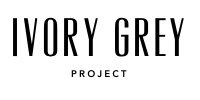The Rise of Pinterest in Luxury Markets: Trends and Opportunities
Even as the landscape of digital marketing keeps changing (especially now with the rise of AI), Pinterest has carved out a unique and increasingly significant niche for luxury brands. A recent Pinterest report, in collaboration with PA Consulting, offers compelling insights into how and why Pinterest has become a vital platform for high-end fashion and luxury bridal brands.
A Haven for Luxury Brands
Unlike most social media platforms, Pinterest is recognized for its positive user environment, free from the often toxic content found elsewhere. This feature of the platform makes it an attractive option for luxury brands, offering a more favorable setting that enhances the visibility and appeal of their products. Add to this the fact that the luxury goods market is undergoing an unanticipated surge. Expected to double in size by 2030, this growth is largely driven by Gen Z consumers, a demographic that is increasingly turning to Pinterest.
Demographics and Spending Power
Pinterest's luxury audience is young, dynamic, and affluent. With 70% under the age of 35 and predominantly female, the platform taps into a demographic that is both influential and financially empowered. Notably, a third of these shoppers have annual incomes exceeding $100,000. These users are not just browsing; they are spending 87% more on luxury goods compared to other consumers, and are 27% more inclined to purchase premium products. This underscores the platform’s significance as a hub for targeting high-value customers in the luxury market.
The Premier Destination for Luxury Shopping
When it comes to luxury shopping, Pinterest is more than just a source of inspiration—it's a research and discovery powerhouse. Three out of every five luxury shoppers use Pinterest to guide their purchasing decisions. Newly engaged couples, including an increasing number of men, are turning to Pinterest for wedding planning, exploring ideas for themes, venues, and bridal gown inspiration, among other things. This trend extends to advertising as well; luxury shoppers on Pinterest are remarkably open to luxury advertising, with a reported 85% more receptivity compared to other platforms. This makes Pinterest an invaluable tool for luxury brands looking to connect with a receptive and responsive audience.
Conclusion
The implications of these findings are far-reaching for luxury brands strategizing for the future. Pinterest offers a unique combination of a suitable environment, a young and affluent audience, and a predisposition towards luxury goods and advertising. As we look forward to 2024, luxury brands would do well to consider incorporating Pinterest into their digital marketing strategies. By doing so, they can tap into a platform that is not just a marketplace, but a thriving community of potential high-value customers.



